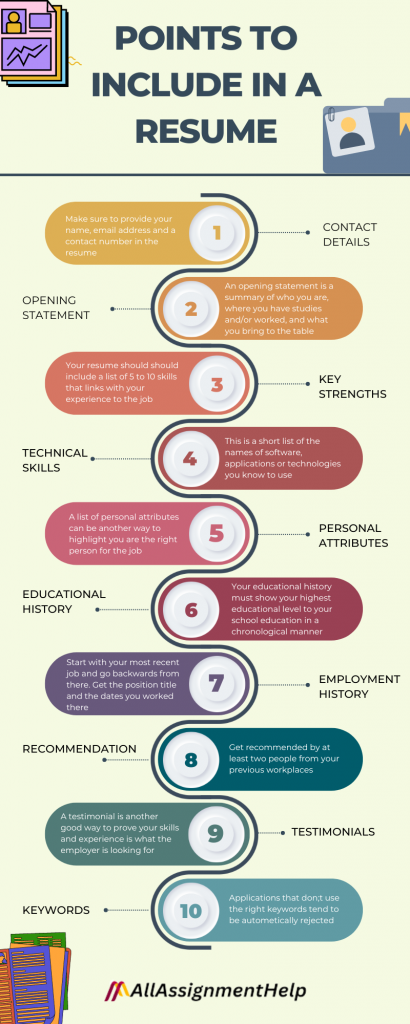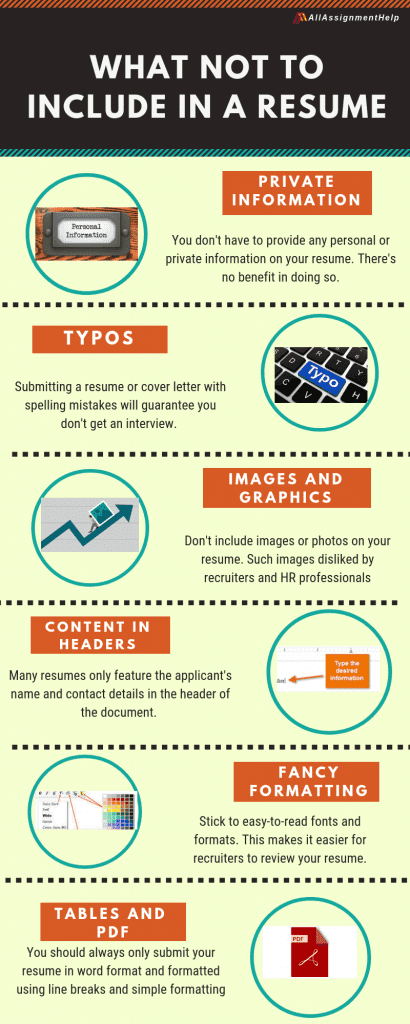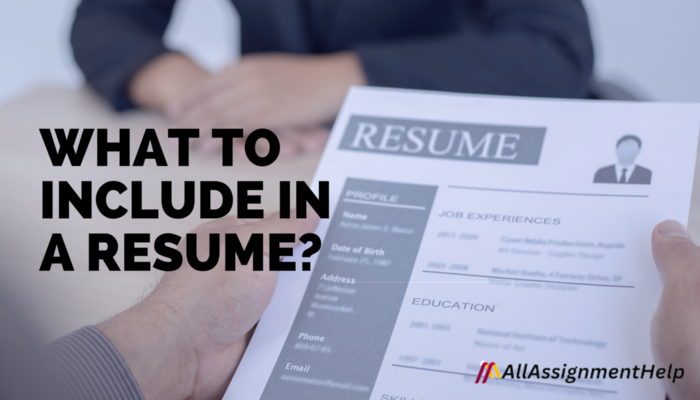Hello, there students! Today I am back with the most demanded topic for which students need help. You might get assignment assistance, classes-related help or even assistance with exams. But, after this, the most important phase that comes is the internships and jobs part. For that, you need to have professional speaking skills which you can develop or you may know, but one thing that you might struggle with is RESUME writing. Yes, many students underestimate it but currently, it contains a lot of weight. Let me tell you that, even before considering you and calling you for an interview, the first thing any employer does is shortlist a person depending on their resume.
Do you know that an interviewer almost gets thousands of resumes in a day? He or she does not have the time to approach each one. So what they do is they shortlist the people whose resumes they find the best. Do you want to save time and get your resume ready within minutes? Don’t worry! All assignment help has curated the tips and techniques that you can use in your resume in this blog. Read till the last to ace your resume and stand out in front of the interviewer.
My ideal resume should be…?
Your resume is your most important tool when applying for a job. It doesn’t matter how qualified you are, or how much experience you have – if your resume is poorly presented or badly written, you’re going to have trouble getting the job you want..
Taking the time to work on your resume is really important. The information in this blog post offers some tips and advice on how to make your resume the best it can be.
Kickstart Your Resume with a Bang! Get to Know Different Types of Resumes
A resume is something that contains a summary of your qualification and your the work you have done so far. You can even list down the internships that you might have done. The whole summary you have listed is compared with thousands of resumes before recruiting them. Therefore, this means that you only have one chance to make the best impressions and for that, you need to focus on your resume writing skills.
Here are a few steps that you can follow:
Look for the Best Resume Format that Suits Your Personality
You need to find a suitable resume for yourself depending on what industry you are applying for and what experience you hold. If you are applying for multiple industries at the same time you need to create two or three versions. Well, there are three types of resumes from which you can choose.
Chronological Format
If you are just starting with your career you can use this type which is the traditional kind where you can list down your education and experience according to the years. This kind of format is used when you trying to apply in any orthodox or old-fashioned company.
Reverse Chronological Formal
It’s okay if you have taken a pause in your work for some time and you have a gap in your work life. In such cases, you can use reverse chronological format to hide inconsistencies in your work.
Functional Formal
Sometimes you might want to change your direction and want to apply for a fresh industry with zero experience. It happens to many people out there as career switch is very common and I believe it is important to explore yourself. In this kind of format, you list your experience not dependent on the years or skills but on your talent and interest. If your skills can speak for your self then experience won’t matter in this case.
Combination Format
The name itself defines this type of format as here you can use the combination of functional and chronological format. It might be difficult to create such kind of but you can take expert help for Resume Format – A Guide for Assistance from professionals. Because using this format is very beneficial. You need to show the full documents of your experience in all the areas so you should be very conscious while doing so or take expert assistance.
Start With Including a Header
Start your resume with the header to make your resume stand out. This is the most necessary step. If you don’t know what to include in the resume you can always take experts assistance and guidance on it. Well, you should include the following things:
- Full Name
- Professional Title
- Phone Number
- Email Address
- LinkedIn URL
- Social Media URLs
- Website (if any)
- Portfolio (if any)
Resume Summary or Objective
After you are done with the header and including your personal information, you should attractively include a summary of your experience and skills. I recommend you keep it in one to three lines only. This can let the recruiter know about the object behind your application for the job. If you are not sure what the right word are you can expert assistance for applying for any peculiar job, even if you want nursing resume writing assistance or engineering-related resume assistance.
Also, note that it is not important to include the summary if your skills are speaking for you. Then in such cases, you can avoid writing a summary. So, this particular step is optional.
List Down the Three Important Sections In Your Resume
Now, this is the most important step as you need to focus on these three sections. You need to include this in your resume very precisely and with full focus as these three sections are the most important ones.

Work Experience
Remember that this particular section is the most focussed part and the recruiter is most interested in this section. So you need to include the following information in a very accurate manner.
Here is what you need to include:
- Job Title
- Company & Location
- Dates of Employment
- Duties & Responsibilities
- Accomplishments
Choose the experience that is most relevant to the company you are applying for. Recollect all your important internships, part-time jobs and even projects. If you are confused about what type of format you should use you can always rely on a business writing service where experts can provide you with a well-written resume.
Education
Curate your education list and include it in your resume following the order of including the most recent one at the top. You can also include training programs or any course you might have done.
Here is what to include further:
- Type of Degree
- Degree Major
- University Name
- School Name
- Course Details
Skills
Finally, you need to include the skills option where you can list down all your skills and even attach your achievements. Include the following list of skills which is the most important one for the recruiter.
- Technical skills
- Communication skills
- Professional skills
- Management skills
- Critical thinking skills
You can also include some extra achievements like:
- Relevant coursework
- Projects & accomplishments
- Awards
- Clubs and organizations
- Scholarships
- Foreign Language
- Conferences
- Hobbies
- Memberships

All these extra also help boost your resume. And one thing that might be optional but I suggest you prepare is the cover letter. A recruiter can get impressed by you if you also attach a cover letter. If you don’t know how to write a cover letter, you can always take assistance from experts.
Closure
Well, this is what you need to follow if you want to draft a perfect resume for yourself to get noticed by recruiters. And, what else you can do to increase your chances to get that job is to use allassignmenthelp resume templates. This can make your resume even more attractive. Experts can help with this and many other things as they are specialists in resume writing, assignment assistance and even help you with your classes or exams if you request them, Can you take my class? Or Can you take my exam? They can help you with everything and make things easy for you. So don’t worry and all the very best for your future endeavours.
